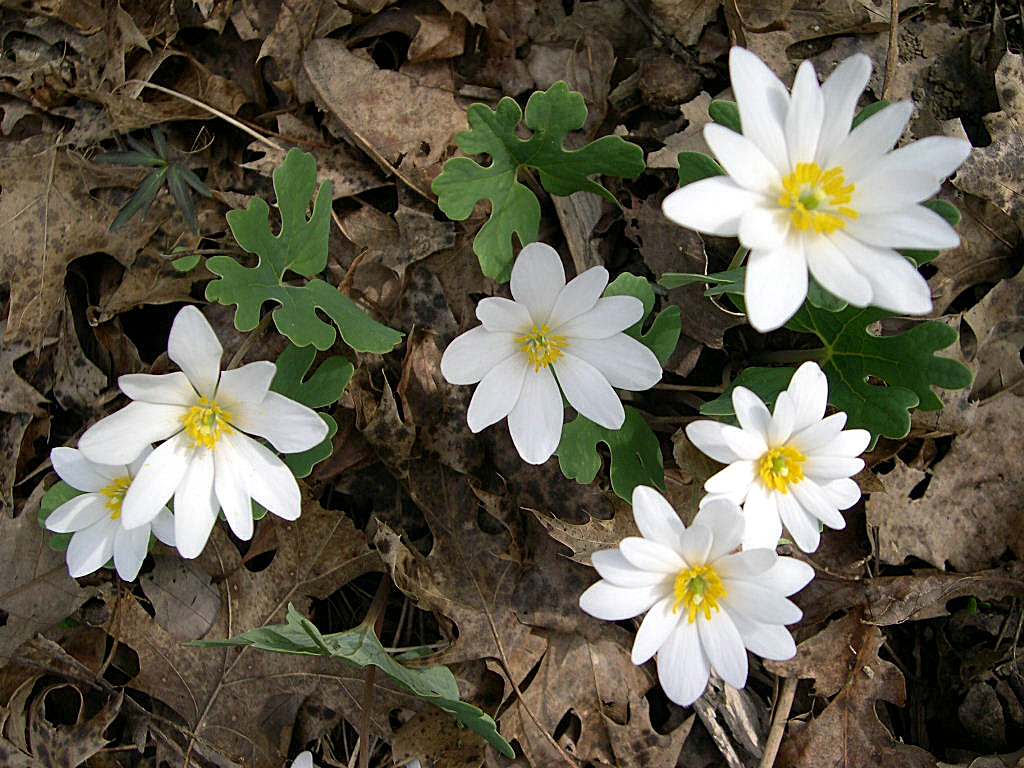
Also known as Canada puccoon, bloodwort, redroot, red puccoon, Indian paint, and black paste, bloodroot is a member of the poppy family, Papaveraceae, that also includes bleeding heart, greater celandine, and corydalis. Both its common and botanical genus name come from the red juice of the root, stem and leaves that was used by native Americans as a dye and insect repellent. In spite of its name, bloodroot is a lovely early spring ephemeral that is native to deciduous woods from Nova Scotia to Florida and west to the Great Lakes. The plant produces stolons and can quickly form a dense stand which can serve as an attractive ground cover. In the dry periods of mid summer the plant may yellow and go dormant if not mulched. Photo Credit Jay Sturner Wikimedia Commons
Description: The plant grows 12-14″ tall from branching, orange rhizomes and has blue-gray, basal leaves that are saucer-shaped, 3-5″ across, and have palmate-reticulate venation. The leaf blades have undulating margins and are deeply lobed with 5-9 major lobes and several smaller ones. The flowers and leaves come up on separate stems with the leaf completely enveloping the flower bud, the bud often opening before the leaf unfurls. The flowers are 1.5-3″ across and have 8-16 white petals and numerous bright gold stamens. Each flower blooms only for a day or two and only when the sun is out. The fruit is an elongated capsule containing 20-30 round, red to black seed that are dispersed by ants when ripe.
Poisonous Properties: The red juice in the leaves, stems, and rhizomes of bloodroot contain resins and alkaloids, such as sanguinarine, that can cause vomiting, diarrhea, fainting, shock, coma, edema, and glaucoma, and potentially death. Although considered toxic to livestock as well as humans, there are no known cases of death due to bloodroot under natural conditions.